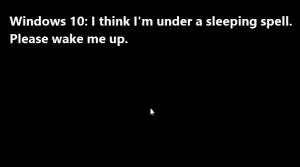
You get a black screen after Windows 10 update? Don’t worry. Many Windows users have been there, and most of them managed to fix the issue by using one of the methods below. You can work your way down the list until you find the one that works.
Try these fixes
- Try a Windows key sequence to wake the screen
- Unplug unnecessary USB equipment
- Update your graphics card driver
- Uninstall third party Windows theming software
- Log in using a different user account
- Reset your PC
Fix 1: Try a Windows key sequence to wake the screen
A quick fix to your black screen problem would be:
- If you have a keyboard connected, press the Windows logo

key+Ctrl+Shift + B.
- If you’re in tablet mode, simultaneously press the volume-up and volume-down buttons three times within 2 seconds.
If Windows is responsive, a short beep will sound and the screen will blink or dim while Windows attempts to refresh the screen.
Fix 2: Unplug unnecessary USB equipment
Sometimes black screens can be caused by external devices. To check for it, you can try disconnecting all your USB devices from your PC:
- Unplug your external devices.
- Restart your computer.
- If the black screen has disappeared, you can plug the devices back one at a time to see which piece of hardware is causing this issue. Once you’ve identified the culprit, you can update the driver for that particular piece of hardware to better troubleshoot the black screen issue — Fix 3 may give you some tips about it.
Fix 3: Update your graphics card driver
Various reasons can trigger black screens after Windows 10 update, but the most common cause of it is incompatible or outdated Windows drivers. Especially the graphics card driver — either your current graphics driver is corrupted during the Windows update process or it’s not compatible with your current Windows 10 version.
Then, updating your graphics card driver should do the trick. But you may wonder how it’s possible to update your graphics driver with a black screen. Don’t worry, generally, you’re able to start your PC in Safe Mode with networking to sort out the issue. If you don’t know how to boot your computer into Safe Mode, you can refer to this article — remember to press the 5 number key to enter Safe Mode with networking.
To avoid creating other problems when downloading and installing the up-do-date graphics driver, you can do it automatically with Driver Easy.
Driver Easy will automatically recognize your system and find the correct drivers for it. You don’t need to know exactly what system your computer is running, you don’t need to risk downloading and installing the wrong driver, and you don’t need to worry about making a mistake when installing.
You can update your drivers automatically with either the FREE or the Pro version of Driver Easy. But with the Pro version it takes just 2 clicks (and you get full support and a 30-day money back guarantee):
- Start your PC in Safe Mode with networking.
- Download and install Driver Easy.
- Run Driver Easy and click Scan Now. Driver Easy will then scan your computer and detect any problem drivers.
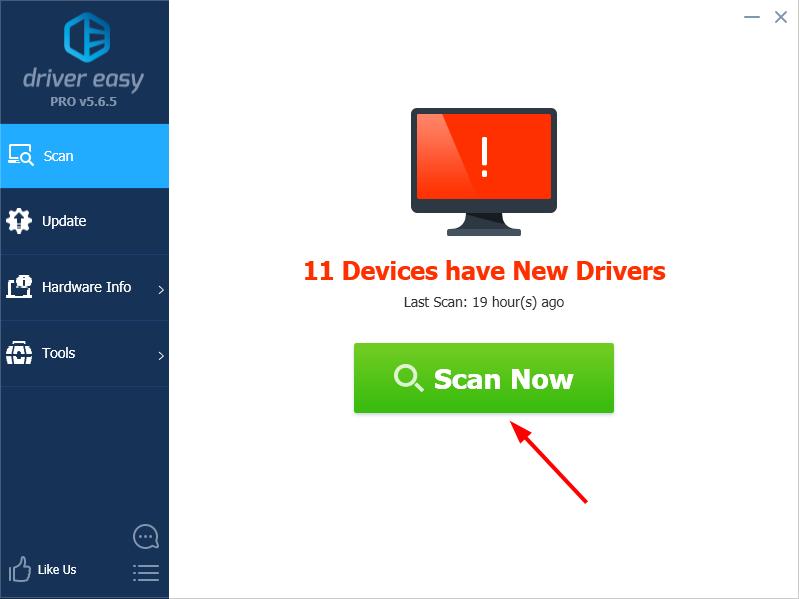
- Click the Update button next to your graphics driver to automatically download the correct version of the driver, then you can manually install it (you can do this with the FREE version).
Or click Update All to automatically download and install the correct version of all the drivers that are missing or out of date on your system (this requires the Pro version – you’ll be prompted to upgrade when you click Update All).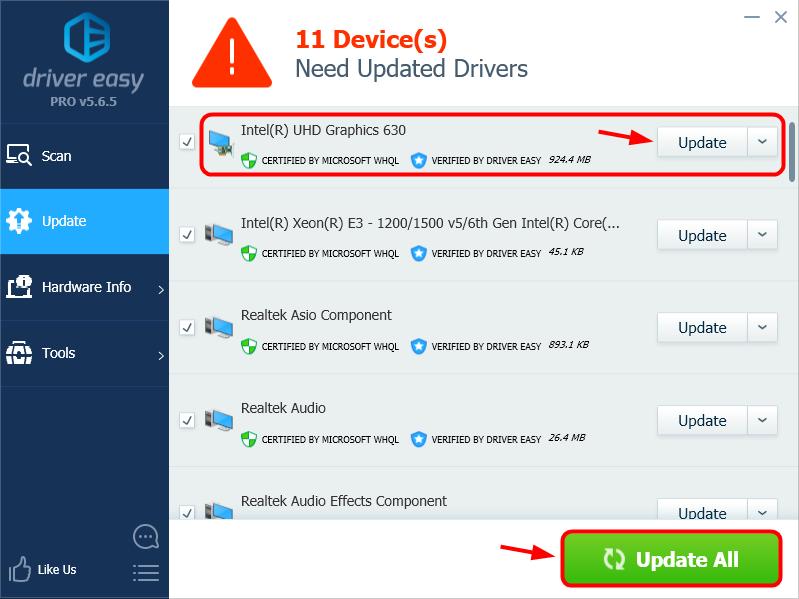
Fix 4: Uninstall third party Windows theming software
If the above steps don’t work for you, chances are that some software, such as antivirus or third party Windows theming apps, may be causing your black screen problem. Especially if you have UXStyle or StartIsBack in your Windows 10, you really should try uninstalling it to fix the issue.
If you don’t have the mentioned applications on your PC, you can try these steps to solve the problem:
- Start your PC in Safe Mode.
- Once you log into your system, right-click the taskbar, then select Task Manager.
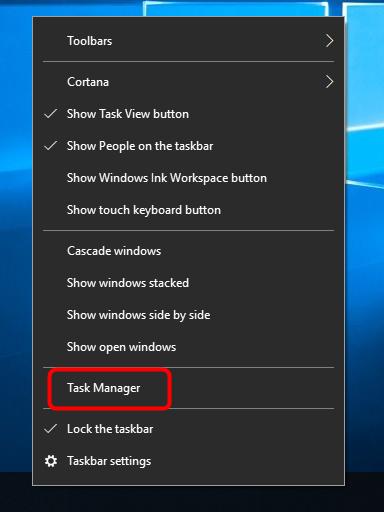
- Click the File tab, then Run new task.

- Type services.msc and check the box under it, then click OK.
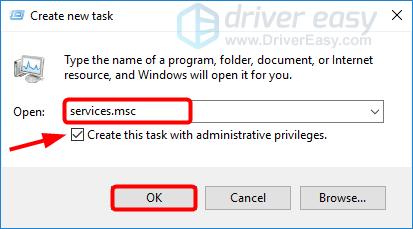
- In the pop-up Services window, double click App Readiness.
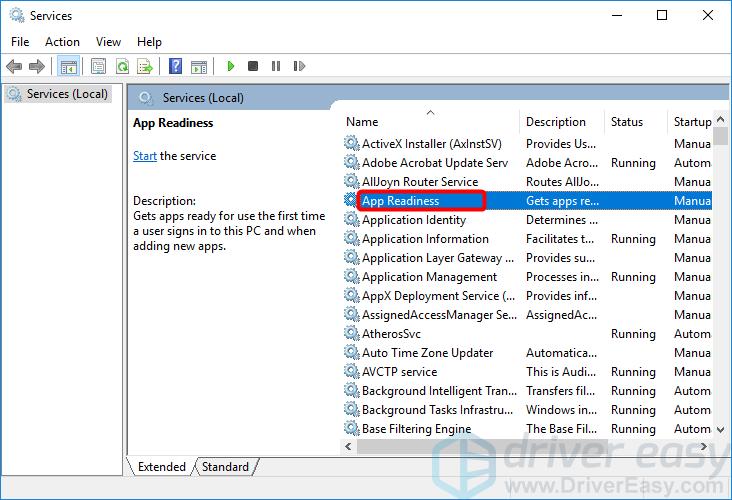
- Make sure the Startup type is set to Disabled, and click Apply then OK.
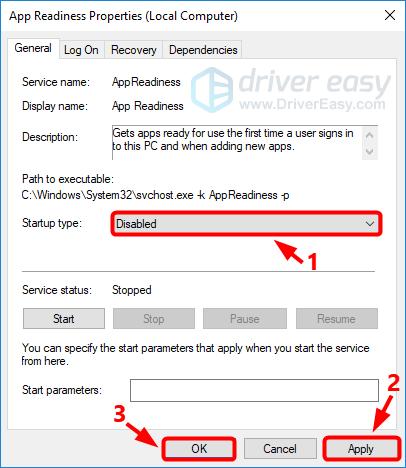
- Restart your PC to check if the problem is resolved.
Fix 5: Log in using a different user account
Black screens might also be caused by corrupted Windows user profile. To check for it, you can try restarting your PC in Safe Mode, then logging into Windows with a different user account, say, your working user account. If you can log in, it means your previous user account was causing the problem, then you can replace the folder of the problem user account with that of your working user account. Here’s what you need to do:
- Restart your computer in Safe Mode.
- Login with your working user account.
- Navigate to C:\Users\{working-user-profile-name}\AppData\Local\Microsoft\Windows\Caches.
- Copy the folder Caches.
- Login with the corrupted user account.
- Navigate to C:\Users\{broken-user-profile-name}\AppData\Local\Microsoft\Windows\Caches.
- Replace the folder with the folder from the working user account.
- Make sure your Windows user account is an administrator. (If it’s not, you can refer to the instructions further down this page to activate the original administrator account and use it to login to Windows.
- In the bottom left corner of your screen, click the Start button, then the Settings icon.
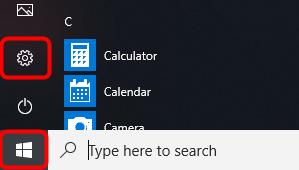
- Click Accounts.
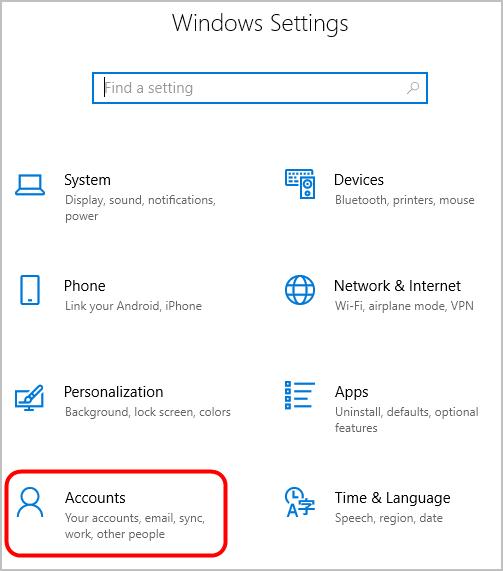
- Click Other people, then Add someone else to this PC. And follow the on-screen instructions to create a new user account.
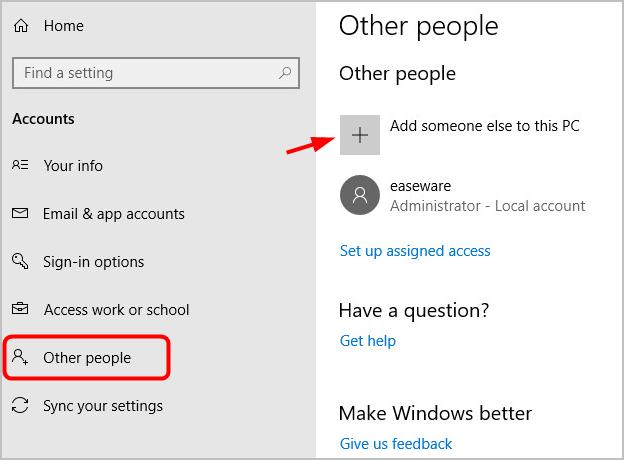
- Log into this account and check to see if the black screen issue is resolved.
How to activate the original Windows administrator account
- Type cmd in the Windows search box, right click Command Prompt, then select Run as administrator.
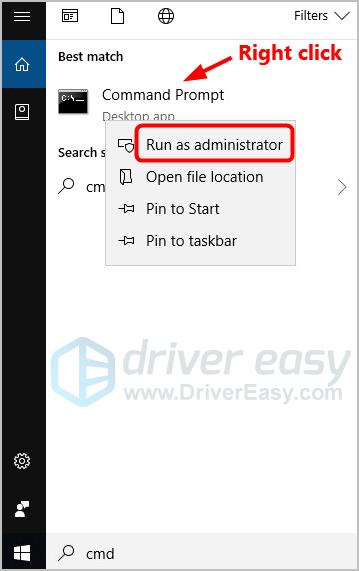
- Type net user administrator /active:yes and press Enter on your keyboard.

- Restart your computer and you’ll be able to log into Windows with the administrator account.
Fix 6: Reset your PC
If none proves helpful for your black screen issue, you may consider resetting your PC, without spending a fortune for a technician. Here’s how to reset your system:
- Restart your PC in Safe Mode.
- Click the Start button, then the Settings icon to go to Settings.

- Click Update & security.
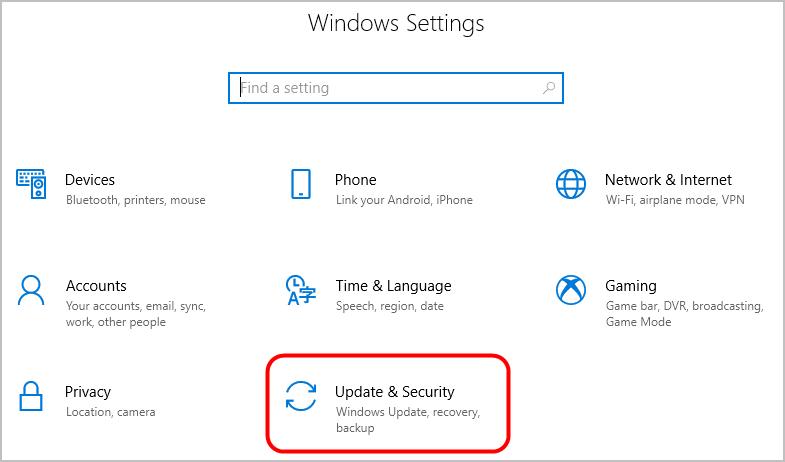
- In the left pane, click Recovery.
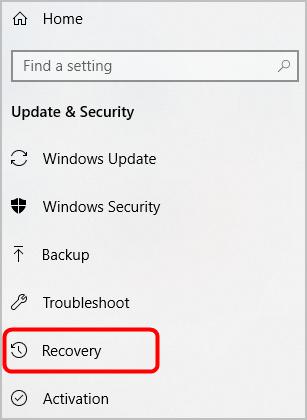
- In the Reset this PC area, click the Get started button. Then follow the on-screen instructions to reset your PC.
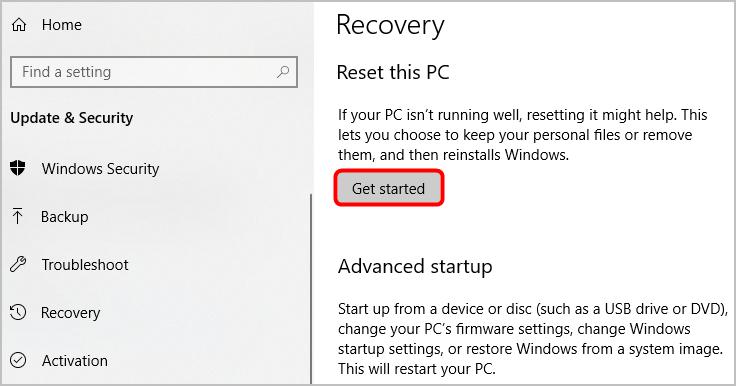
Did this solve your problem? Feel free to leave a comment below to share your results.





